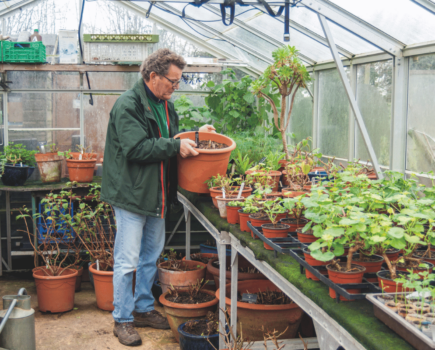These easy expert tips will help transform your garden space into a nurturing safe haven for wildlife.
Gardeners are being urged to help wildlife this winter, by hanging out fat balls and avoid turning their compost heaps. As the autumn progresses into a cold winter, sharing your green space could help an animal in need.
From toads and frogs to the humble hedgehog, wildlife in gardens across the country are starting to adapt and prepare for the winter ahead.
By ensuring the animals have access to food, water and shelter, this will give them a much better chance of surviving the winter.
A spokesperson for Gardening Express said, “When it turns to autumn many of us start to change our house in order to make it cosy for winter.
“Our wildlife is just the same, but unfortunately for them winter can be some of the most dangerous months.
“By changing a few things in our gardens, we can help make life easier for the wildlife as well as giving them somewhere to feel safe.”
To help, experts at Gardening Express have complied six tips on how to help look after wildlife.

Berries
If you have any berry or fruit trees in your garden, ensure you leave some fallen fruit and berries untouched. Traditional hedgerow berries such as blackberries, sloes and rosehips, will provide food for birds during the colder months.
Food
Placing food out for animals to eat, without needing to hunt or scavenge, is a simple but effective way to look after local wildlife. Place fat balls or blocks out for birds, along with grain and nuts, to keep them going through the winter months.
Compost heap
Compost heaps are a great place for hibernating animals to live, due to the warmth it can provide a temporary home. Take caution when turning your heap — or if you’re able to try and avoid turning it at all, or as much as normal — during the cold winter months.

Bug hotels
Get the whole family involved! Building a bug hotel with pieces of wood and leftover bricks and other materials will provide a safe place for bugs to call home. It can be as small or as big as you like — and can be as simple as a pile of logs.
Ponds
If you have a pond and see it frozen over, try and melt a hole in the middle so that the animals can still find a source of water. Do this by using a saucepan full of hot water. But don’t hit or crack the ice, as this can cause shockwaves, causing potential damage to the animals in the pond. If you don’t have a pond, a little dish of water at ground level will be a great source of water.
Bonfires
Big community bonfires may not be happening this year, but if you’re planning one at home, it’s important to check for all animals and wildlife before starting. Prod underneath the bonfire with a stick to encourage the animals to move, checking thoroughly, before you strike a match.








